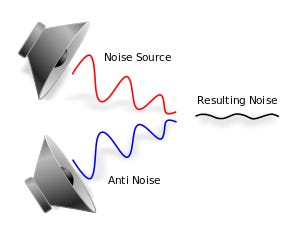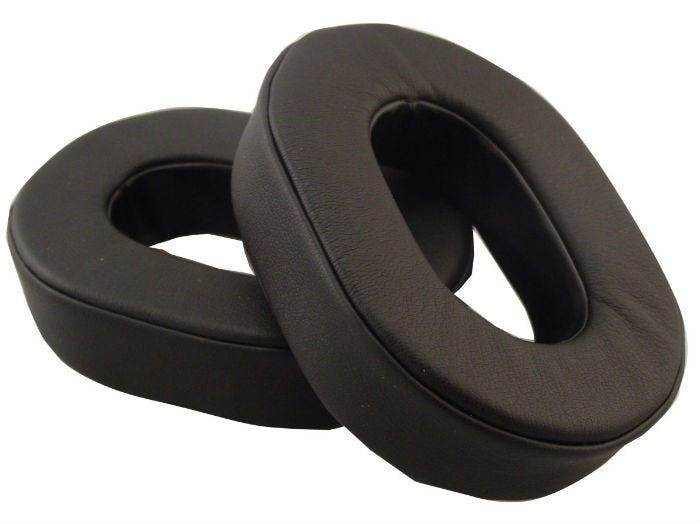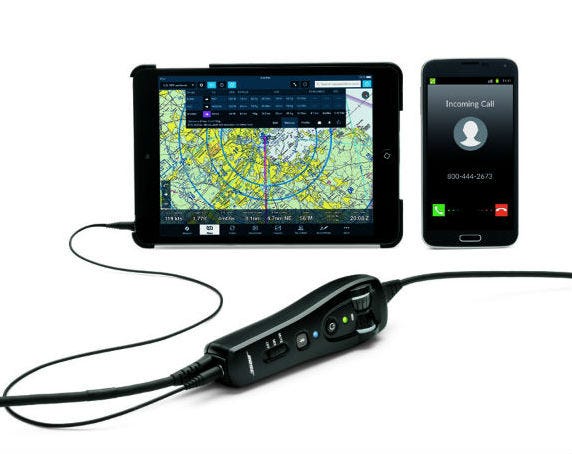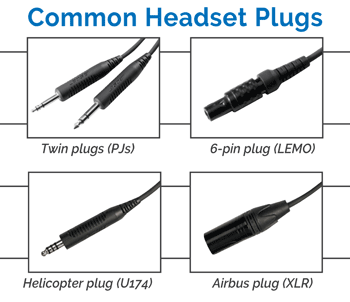Choosing the right headset
Buying an aviation headset is a surprisingly personal decision. There is no “right answer” for every pilot – it depends on the type of flying you do, what airplane you fly most often and your personal preferences. Here are a few things to consider as you compare models.
 Quiet
Quiet
There are two ways to cancel noise: passive noise reduction (PNR) and active noise reduction (ANR). Almost every headset has at least some PNR, which is created by the headset’s ear seals physically blocking noise from reaching your ears. ANR, maybe the best thing that ever happened to headsets, goes further. In addition to passively reducing noise, ANR headsets use electronics to sense the noise in the cockpit and then cancel it by emitting a sound wave with the same amplitude but inverted phase. Some call it magic, but rest assured, it’s a really neat science that makes it happen. ANR headsets are often lighter, because the electronics eliminate the need for heavy soundproofing. However, they do require a power source (either batteries or panel power – see below).
 Comfort
Comfort
While many pilots focus on how quiet a headset is, comfort may be even more important. After all, it doesn’t matter how good the noise cancellation is if it’s too uncomfortable to wear. In general, the lighter a headset is, the more comfortable it will be. Lighter weight composites have made modern headsets lighter, and the distribution of weight is also important – less in the headband and more on the ear cups is generally more comfortable. Other factors are also important, like the quality of the ear seals headband. Some headsets even allow you to adjust the comfort settings, like clamping force.
 Bluetooth Features
Bluetooth Features
Many headsets can wirelessly connect to your smartphone via Bluetooth, which allows you to make phone calls from the cockpit while enjoying the noise canceling benefits of your headset. This is great for calling Flight Service on the ground or for updating family members if your plans change. Passengers also love this feature for listening to music in flight – almost essential for flying with kids! Some headsets even offer built-in audio controls right on the headset, which allow you to pause, play and skip songs without fishing out your iPhone.
 Cable Variations
Cable Variations
Most headsets come in a variety of cable variations – that is, what the plugs look like that connect to the airplane. The most common connector is the twin plug, often called PJ plugs. These are found in fixed wing aircraft, primarily general aviation airplanes, but many airliners are using it too. When in doubt, buy a PJ plug headset. Another good option for general aviation airplanes is the 6-pin or LEMO plug. It allows the headset’s ANR box to draw power from the aircraft panel, eliminating the need for batteries in the headset. Many newer airplanes are being equipped with this plug from the factory, and there is an install kit available if you are looking to upgrade an older airplane. Helicopters use a single, shorter plug called a U-174/U connector, while Airbus airplanes use an XLR connector.
The takeaway
In general, you get what you pay for with aviation headsets – in terms of quiet, comfort and audio features. When in doubt, the old advice to “buy the most headset you can afford” is pretty good. Most quality headsets will last for a decade if you take care of it, so it’s an investment that will pay off. If you’re not sure, Sporty’s Test Flight Guarantee can be a major benefit. Take your headset flying and make sure it works for you.
- Flying with Flight Simulator – Flight Maneuver Spotlight - May 20, 2024
- Soft Field Takeoff – Flight Maneuver Spotlight - January 22, 2024
- Browse our Freee Scholarship Directory - December 16, 2023


